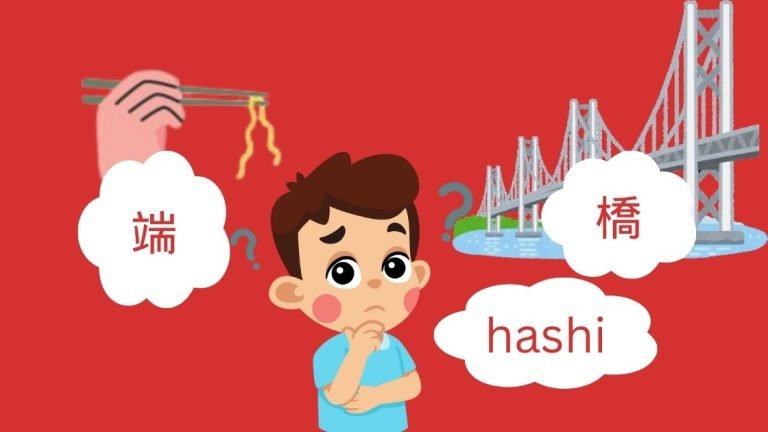How To Translate Japanese Writing To English: Mastering The Basics

“ありがとう、あなたがいてくれてよかった。” (Arigatou, anata ga ite kurete yokatta.) – “Thank you, I’m glad you were here.” This touching line from 1 Litre of Tears reminds us that gratitude speaks volumes, even when words get lost in translation.
Yet, let’s face it: translating from Japanese to English isn’t always a walk in the park; it’s more like a trek up Mount Fuji!
At ICOS Global, we know that the journey of translation is packed with twists and turns.
Whether you’re tackling legal documents, corporate emails, or that heartfelt manga dialogue, navigating the complexities of the Japanese language can be as daunting as solving a riddle from a wise old sage.
It’s simple to get overwhelmed by the thousands of kanji characters and layers of cultural complexity.
But fear not!
With the right resources, a dash of creativity, and a sprinkle of empathy, we turn translation hurdles into stepping stones.
Join us as we dive into the beautiful intricacies of Japanese, exploring why it can trip up even the most seasoned English speakers.
From anime quotes that tug at your heartstrings to ancient texts that reveal Japan’s rich history, we’ll show you how ICOS Global transforms the seemingly impossible into clear, impactful communication.
Let’s get our feet on this adventure together—because when it comes to translation, every word counts!
Table of Contents
How Hard is Japanese to Learn for English Speakers?
Learning Japanese is both a complex and a rewarding journey, just like Naruto’s quest to become Hokage. His famous catchphrase, “諦めないで” (Akiramenaide) – “Never give up!” aptly encapsulates the mindset required to approach Japanese.
Unlike English, Japanese has three different writing systems—Hiragana, Katakana, and Kanji—each with its own unique purpose, making the language a challenge that demands dedication and persistence.
1. Hiragana (ひらがな)
- What is it: The phonetic syllabary known as hiragana is used to write most native Japanese words. Each character represents a specific sound, similar to how letters work in the alphabet in English.
- Usage: It’s often used for grammatical elements like particles (such as wa, no, ni) and verb endings. It’s also used when a word doesn’t have a kanji representation or for words intended to be written more simply.
- Example: The word “konnichiwa” (こんにちは), meaning “hello,” is typically written in Hiragana.
2. Katakana (カタカナ)
- What is it: Katakana is another phonetic syllabary, but it’s used mainly for foreign words, technical terms, and names of animals or plants. Each sound in Katakana corresponds to one in Hiragana, but the two systems use different characters.
- Usage: You’ll find Katakana in loanwords, foreign names, and onomatopoeic sounds.
- Example: “Internet” is written as “インターネット” (Intānetto). The Katakana for “coffee” is “コーヒー” (koohii)
3. Kanji (漢字)
- What is it: Kanji are logographic characters borrowed from Chinese. Unlike Hiragana and Katakana, which represent sounds, Kanji represent entire words or concepts. Each Kanji character can have multiple meanings or readings depending on the context.
- Usage: Kanji is often used for nouns, stems of verbs, and adjectives. They convey meaning more concisely and are used for many basic words, such as water (水) or sun (日).
- Example: The word “Japan” is written as “日本” (Nihon), where “日” means sun, and “本” means origin or root.
For English speakers, Japanese is one of the most difficult languages to master.
But just like Naruto’s determination, a methodical approach, and the right tools can help you overcome the hurdles and see through the beauty of the language.
Why is Japanese So Difficult?

Learning Japanese presents a unique set of challenges. Its complex writing systems and its distinct grammar rules, make Japanese very difficult to master.
Let’s break down the difficulty levels one by one:
Writing Systems:
One of the most notable hurdles is the three different scripts: Hiragana, Katakana, and Kanji. While Hiragana and Katakana are relatively simple with 46 characters each, Kanji consists of thousands of intricate symbols. Each Kanji character can represent multiple meanings, depending on the context, making it a difficult system for learners to navigate
Grammar
Japanese grammar differs significantly from English. Japanese follows a subject-object-verb (SOV) structure, where the verb comes at the end of the sentence.
For instance, the phrase “I eat sushi” would be “I sushi eat” (私は寿司を食べる) in Japanese.
This reversal of sentence structure can take time to get used to, especially for those accustomed to English’s subject-verb-object order.
Pronunciation
While Japanese pronunciation is fairly simple, with fewer sounds compared to English, the challenge lies in mastering the pitch accent. Unlike English, which stresses emphasis on syllables, Japanese uses pitch. Incorrect pitch can change the meaning of a word entirely, much like the difference between “hashi” (橋, bridge) and “hashi” (箸, chopsticks). For learners, this subtle distinction can be tricky to master, adding to the overall complexity of the language.
Tips for learning Japanese Translation to English
Just as Naruto learns new techniques and strategies to become a better ninja, mastering Japanese translation requires a set of refined skills.
Here are a few tips to help:
Understand Context and Culture:
- Context is Key: Japanese words can have multiple meanings depending on the context.Always keep the surrounding text and the main idea in mind.
- Cultural Nuances: Be mindful of idioms, cultural allusions, and social conventions. For example, the phrase “お疲れ様です” (Otsukaresama desu) is often used to acknowledge someone’s hard work, but it doesn’t have a direct English equivalent
Master the Writing Systems:
- Kanji, Hiragana, and Katakana: Japanese uses three scripts. Kanji represents words or morphemes, while Hiragana and Katakana represent syllables. It is essential to comprehend these scripts in order to translate accurately.
Avoid Literal Translation:
- Natural Flow: Aim for a translation that sounds natural in English rather than sticking rigidly to the Japanese structure.
- Idiomatic Expressions: Japanese idioms often don’t translate directly.
- For instance, the line “猿も木から落ちる” (Saru mo ki kara ochiru) technically translates to “Even monkeys fall from trees,” but it means that mistakes are made by everyone.
Practice Regularly:
- Translation Exercises: Engage in various translation exercises such as news translation, poetry translation, and diary translation to improve your skills.
- Review and Edit: Review and revise your translations frequently. This helps catch errors and improve the quality of your work.
Learn from Examples:
- Anime and Manga: Watching anime and reading manga can provide insights into informal Japanese and cultural references.
- Japanese Drama: Dramas often use everyday language and expressions.
- For instance, in Hana Yori Dango, the phrase “道明寺、好きです” (Dōmyōji, suki desu) – “Domyoji, I like you,” illustrates the acuteness of expressing emotions in Japanese.
Recongnize Grammar Variations:
- Sentence structure: Japanese sentences often contain a subject-object-verb order, in contrast to English. It is often necessary to alter the sentence structure in order to get a natural translation.
- Particles: In Japanese, the words for the subject and topic of a phrase are “は” (wa) and “が” (ga), respectively. Understanding their use is crucial to a proper translation.
Build a Strong Vocabulary:
- Kanji Knowledge: Knowing a wide range of kanji characters is essential. Use resources like flashcards and kanji apps to expand your vocabulary.
- Specialized Terminology: Get acquainted with terms used specifically in industries such as technology, business, and medical.
Seek Feedback:
- Peer Review: Have other translators review your work. Constructive feedback can help you improve and catch mistakes you might have missed.
- Professional Networks: Join translation communities and forums to share experiences and learn from others.
Stay Updated:
Continuous Learning: Language evolves, and so should your skills. Stay updated with the latest trends and changes in both Japanese and English.
Frequently Asked Questions
People in Japan often struggle with English because the two languages differ significantly in grammar, sentence structure, and pronunciation.
Japanese is syllabic, while English relies on a range of phonetic sounds that don’t exist in Japanese, making certain English sounds difficult to produce.
When translating “Itsumi” from Japanese to English, context is crucial. The meaning of “Itsumi” can vary depending on whether it’s a name, a place, or part of a phrase. Understanding the surrounding text ensures a more precise and meaningful translation.
Romaji is the use of the Roman alphabet to write Japanese words. It’s helpful for beginners learning pronunciation, but it’s not commonly used in formal Japanese writing or translation.
You can say “いいえ、結構です” (Iie, kekkō desu), which is polite and used in everyday situations to decline offers respectfully.
Thank you can be expressed informally with “ありがとうございます” (Arigatou), but formally with “ありがとうございます” (Arigatou gozaimasu).
Signing Off:

The intricacy of the Japanese language makes it evident that studying it requires more than just vocabulary acquisition. Rather, for mastering it, you require absorption into a culture rooted in tradition, history, and depth.
The difficulties with its writing systems, grammar, and pronunciation are a reflection of Japanese society, where communication is shaped by context and complexity.
Understanding these linguistic levels raises an even larger issue To what extent is a language dependent on comprehending its speakers?
It could be that learning. And that is to see the world through a new cultural lens is just as difficult as learning a language when trying to become fluent in Japanese.
If you plan to cut the clutter & headache and are looking for reliable solutions to translate complex Japanese texts into English, our Japanese translation services are here to help
Connect with us today for accurate and culturally sensitive translations!
Connect here
